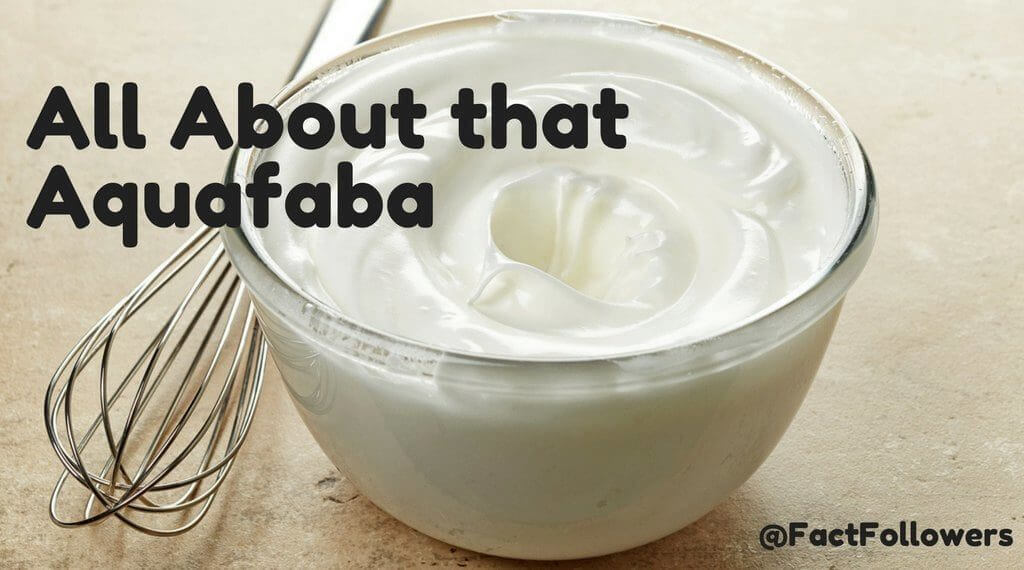Key takeaways:
- The foam on top of chickpeas is called aquafaba, a substance consisting of various carbohydrates and proteins from chickpeas (or other legumes). The proteins are key in forming the foam, and function similar to egg whites.
- Aquafaba is relatively tasteless, so whipping it after adding some sugar and cream of tartar makes a good plant-based meringue (not quite the same as whipped cream though)
- Aquafaba is completely safe to eat, but since it can boil over when cooking chickpeas, it’s usually easiest just to remove it.
When you boil chickpeas (a.k.a. garbanzo beans), particularly soaked chickpeas, you’ll notice that a sizeable layer of foam forms along the top of the water.
You’ll find it in canned chickpeas as well.
You can even see a bit of it when you just soak dried chickpeas.
So what is it? Can you eat it? Is it nutritious?
I’ll answer these questions as simply as possible here.
Table of Contents
Why Do Chickpeas Foam, and What is it?

The foam itself is usually called Aquafaba, and it can be used in many vegan recipes because it shares a lot of cooking properties with egg whites.
While chickpeas are cooking, they release a combination of proteins, carbohydrates, and saponins, which turn into a white foam (also called “scum”). This applies to other legumes as well, so even though chickpeas are usually used for aquafaba, you can make aquafaba from other legumes as well.
Saponins are a type of soapy chemical (safe to eat in this case) that collect at the top liquid-air boundary, and foam up under the right conditions. The unique combination of protein and carbohydrates that get released help thicken it up even more.
Should I Remove the Aquafaba Foam?
As that foamy layer appears while cooking, the next question is should you remove it or not.
You technically don’t have to scoop out the chickpea water foam if you don’t want to.
As you drain and rinse the chickpeas afterwards, the aquafaba will dissolve into the rest of the water and drain away.
However, I personally scoop out most of it for 2 reasons:
- If your pot is pretty full, the foam can spill out fairly easily.
- Removing the foam makes the chickpeas easier to stir around occasionally, and remove for tasting (to check if they’re ready).
You can just dispose of it down the sink.
However, you may want to scoop some out beforehand to use in other recipes. Note that it will “flatten” to more of a regular liquid, but it can be used as shown below.
What Can You Cook With Aquafaba?
You can store aquafaba for about a week in the fridge. It may lose it’s fluffiness, but you can use a whisk to bring it back.
For most recipes, you whip the aquafaba to form a fluffy foam, just like you would with egg whites traditionally. Here’s a great simple guide to doing this:
You can also use it in its typical liquid form as an egg substitute (3 tablespoons of aquafaba for every egg).
Here are a few recipes that use aquafaba:
You can also use it to make vegan marshmallow fluff (the store-bought version isn’t typically vegan).
What Does Aquafaba Taste Like?
When you use aquafaba in a recipe, it doesn’t taste very “beany” at all.
Aquafaba doesn’t have too much of a flavor (other than the flavor from other ingredients you add), and the taste really comes from the texture.

This is excellent, thank you! I boil my own chick peas and will save the aquafaba from now on and make these fabulous things. I learned something wonderful today!
Can you use other pulse waters? What about red kidney beans, butter beans, pinto?
Many thanks again.
Hi Grace,
You absolutely can use other pulse waters, with varying results. I did a few experiments about making aquafaba from other types of beans that you’ll probably find useful.
Great to know! I cooked chickpea pasta which foamed up during cooking, and the water I reserved cooled into that very thick opaque substance. Will have to try a batch of cookies!